TO CELEBRATE ITS CENTENARY 1913 – 2013
COMPILED BY PHILIP THOMAS FROM VARIOUS SOURCES
(c) 2013 St Swithun's Church, Belper
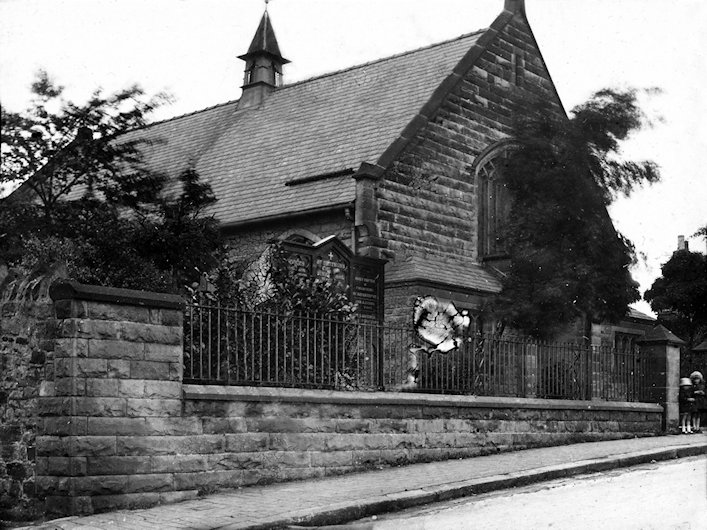 St Swithun's CofE Church Circa 1919
St Swithun's CofE Church Circa 1919
ORIGIN OF SAINT SWITHUN'S CHURCH
In about 1909 or 1910 the vicar of St Peter's Church in Belper, the Rev Stuart Harrington Clark, invited the Church Army to conduct a Van Mission in the parish. This was conducted by Captain Jesse Ford and great spiritual fervour ensued which caused the parish to desire a residential officer on a more permanent basis.
This was agreed upon by the vicar, but when local people insisted that this officer should be none other than Captain Ford, he hardly thought that Church Army Headquarters would agree, for he was an outstanding evangelist in the Van Department. However, such an application was made, the result being that Captain Ford was allowed to come, which was more than a little surprising.
On arrival Captain Ford (then about 29) had no premises to work from but he was provided with a new cottage (8 Crich View, Cowhill – on the corner of Holbrook Road and what is now called Hillside Rise) and he and his wife Alice took up residence. (They had married in 1910.) It might be stated that the district of Cowhill was somewhat notorious at the time, being an area where the police patrolled in pairs. At first the captain used his little cottage for both Sunday School and Sunday Services, but as numbers increased it was necessary to move them into the Reading Room in Three Gates. This also became too cramped and by April 1911 space was taken in the local Fleet Girls School.
Growth
Enthusiasm continued to increase, the result being a desire to have a church of their own in that part of the parish, so it was decided to start a Building Fund Subscription List. It was then proposed to ask Mrs Elizabeth Hanson (whose house stood prominently on the overlooking Chevin) to head the list.
On being approached, Mrs Hanson did far more than that, for she promised to have the church built for them in memory of her husband who had recently died. Mr Hanson had been a director of Brettles Hosiery and the work people lived mainly in the Cowhill district. Out of admiration for Captain Ford's work, she also had St Swithun's House built for him and his wife and family to live in. When asked about the naming of the church, Mrs Hanson requested St Swithun's because her husband had been born on St Swithun's Day.
The foundation stone was laid by Mrs Hanson in September 1912 and the building was externally complete before the end of the year. The mosaic floor was laid by an Italian firm under conditions of great secrecy for the technique was virtually unknown in this country. The church was opened by the Bishop of Derby (Charles Thomas Abraham, Suffragan to the Bishop of Southwell) on 30 April 1913 and Mrs Hanson became a regular worshipper. Originally the church was also used for social events but Mrs Hanson soon had another building (The Institute) erected for that purpose. When Mrs Hanson's health began to fail the choir would go up to her house from time to time to sing to her, especially at Christmas.
Moving on
Captain Ford eventually left the parish in 1917 to take up a Church Army appointment in Liverpool Prison, to act as assistant to the Prison Chaplain. It is recorded that he died in the pulpit of the prison chapel.
Taken, with minor alterations, from a report compiled by Captain E G Gasson, Church Army,
who was in charge of Saint Swithun's from 1950 to 1961.
COW HILL IN 1913 (Most maps give it as one word)
Until major population increases, Belper was a scattered settlement with a nucleus around the green (or Market Place) and St John's Chapel. Cow Hill was a distinct settlement and by 1850 was of significant size, broadly speaking consisting of a ribbon development all the way up our side of Holbrook Road as far as and including Canada Street together with Three Gates, the top end of Foundry (Becksitch) Lane, The Horse and Jockey and the alehouse and about five other properties opposite in The Fleet.
So Cow Hill may reasonably be defined as that part of Belper which is up hill from the top of Gibfield Lane. However, a case could be made to include the cottages in Gibfield Lane and in The Fleet as far as the park. The Parks Estate did not exist and the open space there separated Cow Hill from the main settlement. The positioning of the name on the maps has moved as the built up area has increased and is not always accurate for the settlement of Cow Hill.
Maps
The best early detailed map of our area is that published by George Sanderson in 1835. Although the name Cowhill does not appear the settlement is clearly drawn, showing that there is no housing on the south side of Holbrook Road and nothing above Wildersley Lane.
The Ordnance Survey of 1912 to 1923 appears to have been carried out about 1913 in Cow Hill and so is about contemporary with the 1911 census and the building of St Swithun's which is marked, as is the Methodist chapel at the top of Quarry Road. Buildings now extend up both sides of Holbrook Road and into Bargate Road. Canada Street and the terrace parallel to it can also be seen together with houses in Hillside Rise.
1911 CENSUS
The 1911 Census is close enough in time to give a good picture of the housing and population of Cow Hill when St Swithun's opened in 1913. Earlier Census data is less specific, tending to call everything Cow Hill (ie not separating the individual roads so that we cannot be exactly sure what is included).
It is apparent that house numbers in Holbrook Road had only recently been allocated and that they ran consecutively (ie not in odds and evens as they do now). What was called Cow Hill is now called Hillside Rise (it had also been known as Three Gates, but the only house recorded is the one now known as 2 Holbrook Road but which retains the Three Gates name plate). Building was in progress in Cow Hill and probably in Holbrook Road where there is some evidence that older cottages were being replaced.
- There were 43 inhabited cottages in Cow Hill plus about 7 being built, plus The Horse and Jockey.
- There were 19 inhabited cottages in Canada Street including the corner shop.
- There were about 87 inhabited cottages in Holbrook Road including 2 shops.
- There were 2 empty cottages.
- Crich view was included with Holbrook Road.
- Also in Holbrook Road were the Cottage Homes (orphanage) and a larger house called Roland House.
- There were 2 inhabited cottages in Quarry Road, close to the Methodist Chapel.
- There were 20 inhabited cottages in Bargate Road.
- There was one inhabited house in Three Gates (this is one of the oldest houses in Belper).
- There were two farms in Wilderslea Lane, Rowlands Hill Farm and Wilderslea Farm, apparently the oldest house in Belper (although it was in Milford Ecclesiastical Parish).
- It is not possible to define how many cottages in The Fleet and Foundry Lane should be allocated to Cow Hill, but the property which was formerly a shop and alehouse and the houses next door to it should be included.
- Three pairs of cottages were in joint occupation, by large families.
This gives a total of 176, so including those in Foundry Lane and The Fleet would probably take the total to about 200.
By mid 1912 five cottages (43 to 47 Holbrook Road) had been demolished, either for rebuilding or specifically for building Saint Swithun's Church. Additionally Mrs Hanson appears to have had right of access to land to the rear of the site since at least 1905.
OCCUPATIONS ACCORDING TO THE 1911 CENSUS
In the 176 properties defined above the occupations were:
- 87 Hosiery – includes 12 handframe knitters, all men
- 50 cheveners (embroiderers), all women
- 52 Foundry
- 47 Colliery
- 39 Cotton mill
- 24 Building
- 12 Grocers
- 11 Railway
- 11 Municipal and unspecified labourers
- 11 Farming
- 10 Domestic
- 6 Gas works
- 5 Fish – 3 Hawkers, 1 Fishmonger, 1 Fryer
- 4 Joiners
- 4 Carters – there are others in specified trades
- 4 Plumbers and glaziers
- 4 French polishers
- 3 Lace
- 2 each of blacksmith, nailer, wire drawer, seamstress, house painter, assurance agent, foster mother, pottery, innkeeper.
- 1 each of Church Army evangelist, school caretaker, tinsmith, brickmaker, greengrocer, butcher, ledger clerk, broom maker, night watchman, showman's decorator, police, milliner, nurseryman, postman, midwife, vocalist, bootmaker, newsboy, gardener, public works inspector.
The age of the workers ranged from 13 to 77 and the workforce numbered 372 out of a total population of nearly 900. Most cottages were of the type known as 2 up and 2 down (number of main rooms) but some were only half this size.
WHY ARE WE SAINT SWITHUN'S?
The building of our church was funded by Elizabeth Hanson as a memorial to her husband Isaac who was born on Saint Swithun's Day. IS IT SWITHUN OR SWITHIN? Old sources are clear that SWITHUN is the correct version, from the Old English Swi?-hun. (The meaning is 'strong bear cub')
WHO WAS SWITHUN?
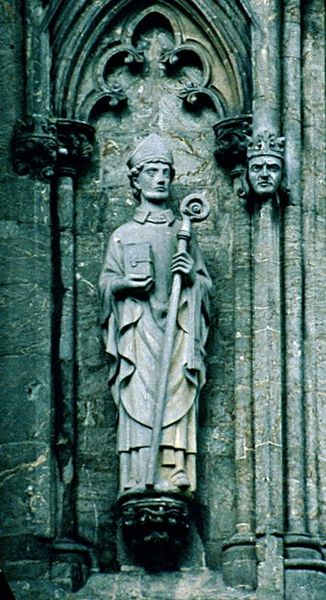
His origins are unknown, but from his name almost certainly English (Anglo-Saxon). It is known that he was ordained Bishop of Winchester in 852, probably on Sunday 30 October, and that he died on 2 July 863.
That is all that is proved about his life. There is however a strong tradition that he was responsible for a bridge being built over the River Itchen in Winchester.
At this time Winchester was the capital of Wessex which covered southern England (south of Mercia which included Derbyshire).
The Minster at Winchester was therefore the most important church in southern England.
A new minster was founded in 901 and in the 960s Swithun was recognised as a saint. In 971 it was decided to re-bury Swithun in the new minster and this took place on 15 July, hence the date on which we celebrate him.
So as well as celebrating the centenary of our church, we are also celebrating the 1150th anniversary of Swithun's death.
 See this article about St. Swithun
See this article about St. Swithun
Image: St Svithun (also spelled Swithin, Swithun) at Stavanger Cathedral, photo credit: Nina Aldin Thune
THE STORY ABOUT THE RAIN
The stories about it pouring with rain when the monks proposed to move Swithun's body to a more imposing tomb are now considered to be very doubtful and research suggests that his tomb was already most splendid.
While the prediction of rain can sometimes be true, it is suggested that the right date should really be 2 July, which was also celebrated as St Swithun's Day, being the day he died. There was already an almost identical tradition relating to two obscure Roman saints, Processi and Martiniani, whose day was also 2 July. It is thought that confusion arose and that the saying really has nothing to do with Saint Swithun.
You may wish to consider whether 2 July is any more reliable than 15 July! Also the calendar is probably slightly out of line as well!
Other Churches Dedicated to Saint Swithun
A book published in 1867 notes 52 English churches dedicated to Saint Swithun. A recent web site lists over forty, some of which are closed.
Winchester Cathedral, a replacement for the second minster, is wonderfully named the "Cathedral Church of the Holy Trinity, and of St Peter and St Paul and of St Swithun". No doubt this helps to distinguish it from the tiny St Swithun's upon Kingsgate which sits on top of the gateway leading into Kingsgate, and only about two minutes' walk from the Cathedral.
MRS HANSON – FOUNDER OF OUR CHURCH
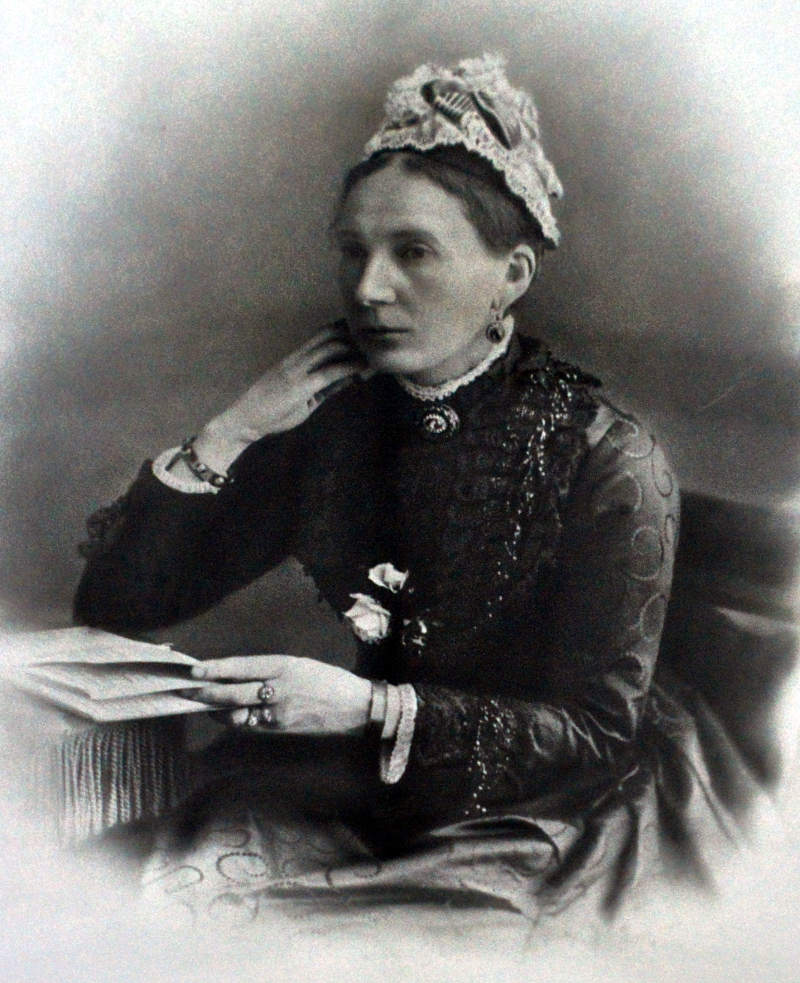 Elizabeth Jane Hanson was the daughter of Robert and Mary Rodgers. She was born about 1830 at Wilne Mills on the north bank of the River Derwent in what is now known as Church Wilne. It is accessible from Draycott and Sawley but at that time there was also a bridge over the river to Great Wilne and Shardlow.
Elizabeth Jane Hanson was the daughter of Robert and Mary Rodgers. She was born about 1830 at Wilne Mills on the north bank of the River Derwent in what is now known as Church Wilne. It is accessible from Draycott and Sawley but at that time there was also a bridge over the river to Great Wilne and Shardlow.
Robert was a cotton mill mechanic. The mill later became an explosives factory. At the 1851 census Elizabeth was recorded as a milliner and dressmaker.
She married Isaac Hanson (a silk hosier) who was born at Wirksworth on St Swithun's Day in 1832. By 1851 he was working in Belper.
They married in 1860 (the marriage is registered at Belper in the second quarter) but they had no children. In 1861 they were living in King Street, Belper.
In 1871 and 1881 they were living in Campbell Street, Belper and about 1879 he became a partner in the hosiery business of George Brettle and Company. He retired in 1897 having probably spent his whole working life at Brettle's.
In 1891 they had moved to Lumb Grange, Farnah Green and may have still been there in 1901 (the census does not specify the house name). By 1911 they had moved again to nearby Chevin Mount which is on the Chevinside road.
Isaac died on 18 December 1911, leaving estate valued at £77,768. Elizabeth died 18 March 1921, leaving estate valued at £61,496, this being eight years after she had completely funded St Swithun's Church, St Swithun's Institute and St Swithun's House as a memorial to her husband.
Mrs Hanson also appears as Saint Elizabeth in the memorial window seen further down the page.
Isaac Hanson:
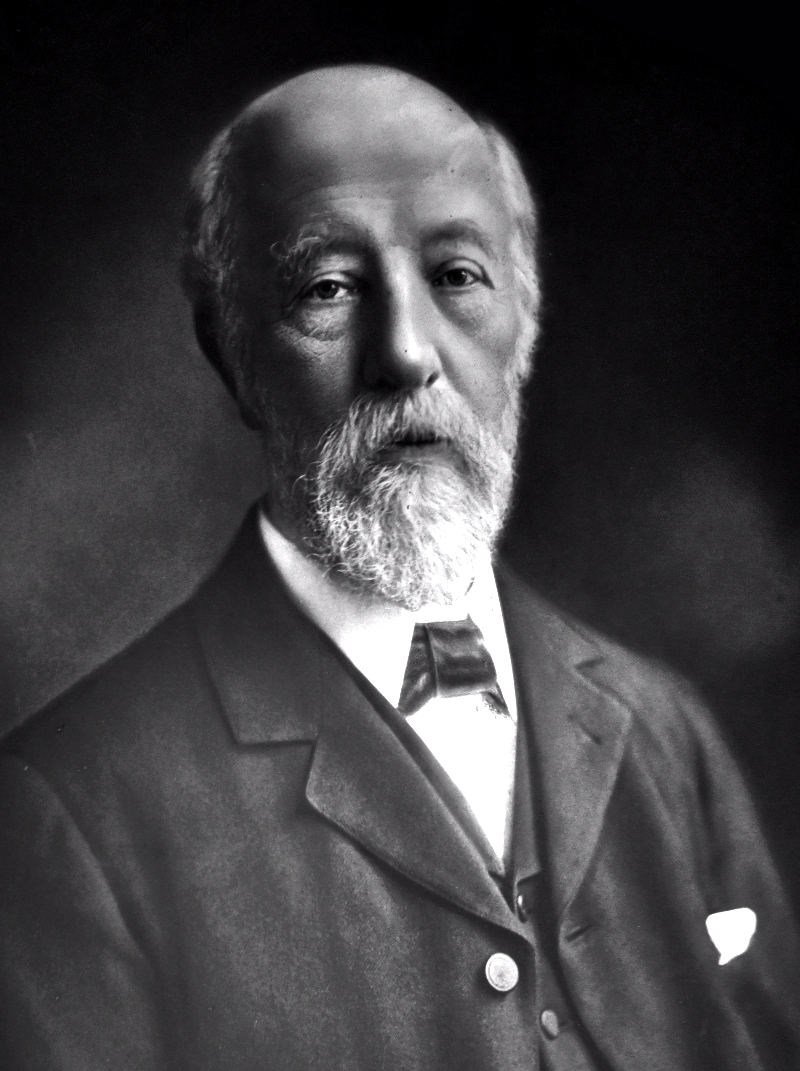
SAINT SWITHUN'S CHURCH: THE BUILDING
Building commenced in 1912 and the foundation stone was laid on 25 September. The roof was completed by about the end of October.
Architects: Hunter & Woodhouse of Belper
Main Contractor: J W Haynes of Belper
Plumbing & Glazing: H Gillett
Mosaic floor: An Italian firm
The stone came from a quarry at Coxbench, and so is very much the same as Derby Cathedral tower which was quarried at Little Eaton some 400 years earlier.
The church was dedicated as a Chapel of Ease or Mission Church on 30 April 1913. This is the date we celebrate for our centenary.
The church remains very much as built except for the seating which was changed between 2000-2002. With the original pews it was intended to seat about 250. With the separate upholstered chairs (of which we have 100) the maximum capacity is now about 130.
Significant additions have been:
- Memorial window for 1914 – 18 war (1919)
- Memorial plaque for those killed in the 1914 – 18 war (1922)
- Memorial window for Elizabeth Hanson (mid 1920s) - SEE IMAGE LEFT
- Organ, a memorial to those killed in the 1939 – 45 war and to Captain Ford (1951)
- New internal entrance doors (2012)
BUILDING WORK
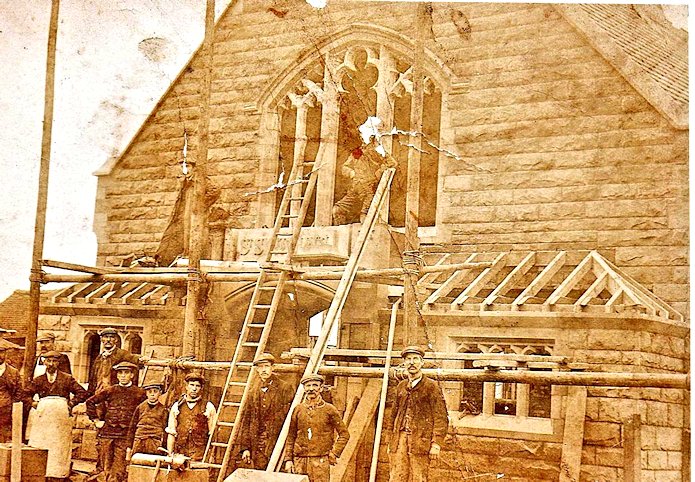 Saint Swithun's with some of the builders. About October 1912
Saint Swithun's with some of the builders. About October 1912
ST SWITHUN'S IS PART OF ST PETER'S PARISH
St Swithun's has always been part of the Parish of Belper (St Peter's) but was principally staffed and largely controlled by The Church Army until 1931 and again from 1939 to 1961. At all other times St Peter's clergy have officiated. Our present Vicar is Reverend Anne Stratton.
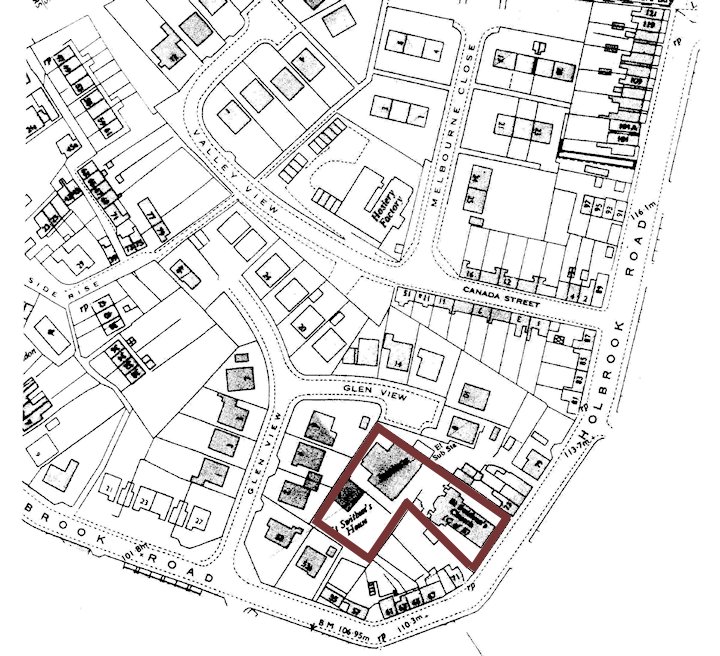 Area around St Swithun's 1994
Area around St Swithun's 1994
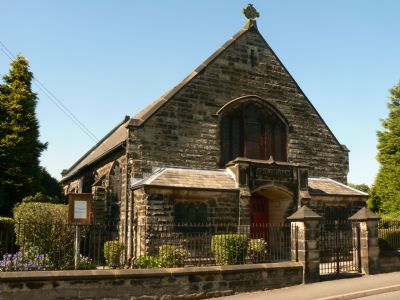
Modern Day St Swithun's
![]() Copies of the booklet on which this page is based
Copies of the booklet on which this page is based
are available from the email below,
price £1.20 including postage.
Any other correspondence should go
direct to the Vicar.
Philip Thomas
Secretary to St Swithun's Council
philip [at] pjthomas.eclipse.co.uk







